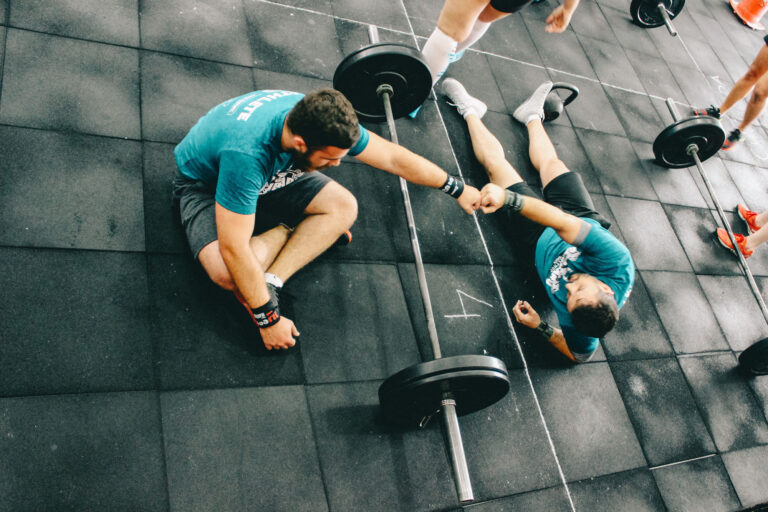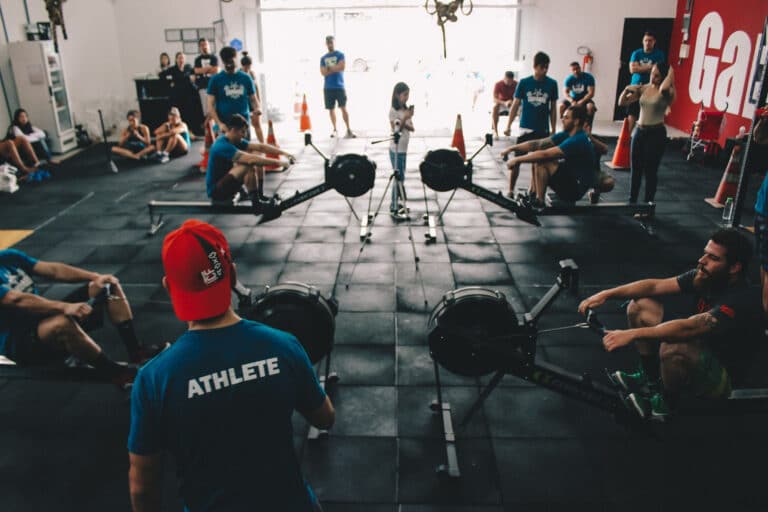Stretching to avoid Injuries
Ever since the early days of physical training, the mantra of “stretch before you exercise to avoid injury” has been echoed in gyms worldwide. But in the realm of “bro-science” – those gym myths handed down from one generation of athletes to the next – does this traditional wisdom hold up under the lens of real science? What form of stretching is most meaningful to avoid injuries? Let’s pull back the curtain and look at the evidence.
Static Stretching: The Misunderstood Veteran
Static stretching, where you hold a stretch for a sustained period, is often the star of bro-science advice. It’s frequently touted as a non-negotiable pre-workout ritual to dodge injuries. However, real science has a different perspective.
Research indicates that static stretching immediately before a workout may actually reduce muscle strength and performance temporarily(1). Far from preventing injuries, it could potentially make them more likely by modifying your movement mechanics or reducing muscle power(2).
Dynamic Stretching: The Real-Science Hero
Enter dynamic stretching – the process of moving parts of your body to gradually increase reach and speed of movement. Unlike its static counterpart, dynamic stretching is backed by real science as a beneficial pre-workout routine.
Studies show that dynamic stretching increases blood flow and flexibility, which could enhance your performance and help prevent injuries. It seems to be a better alternative to static stretching when it comes to prepping your body for an intense workout.
Warm-Up: The Uncontested Champion
In both bro-science and real science, one aspect holds consistent – warming up. A proper warm-up increases your heart rate, loosens your muscles and joints, and enhances blood flow to your muscles.
This can improve your workout performance and potentially avert injuries. Whether your warm-up incorporates a form of dynamic stretching or a light version of your workout activity, it’s an essential routine to adopt.
Cool-Down and Post-Workout Stretching: The Overlooked Protectors
Often downplayed in bro-science, post-workout stretching and a proper cool-down phase are vital according to real science. Stretching after a workout can aid in improving flexibility over time and may facilitate recovery.
Moreover, a good cool-down helps your body return to its resting state and can reduce the risk of dizziness or fainting after strenuous exercise.
Bro-Science vs. Real Science: The Verdict
Preventing injuries involves more than just stretching– a fact often oversimplified in bro-science. Real science emphasizes proper training techniques, gradual progression in workout intensity, adequate rest and recovery, good nutrition, and listening to your body’s signals as crucial elements for injury prevention.
As we continue to dispel myths and replace them with evidence-based practices, it’s essential to always stay informed with the latest scientific research. Consulting with fitness professionals who keep up-to-date with recent findings is a great way to ensure your fitness journey aligns with real science rather than bro-science.
Final Word
Our fellow gym goers often provide a lot of good historical advice. When it comes to stretching few doubt the benefits of warming up but in many cases it is difficult to avoid assertions that static stretching while cold achieves greater strength and flexibility. This isn’t necessarily supported by science. On the opposite end of the spectrum science rarely has an opportunity to evaluate gym truths in the way we know them. While “bro-science” often carries kernels of truth, it’s important to apply a critical lens and validate these traditional beliefs with scientific evidence. In the case of stretching, real science shows that the type, timing, and context of stretching matter greatly. By aligning our workout routines with scientific evidence, we can optimize performance, reduce the risk of injuries, and ensure our fitness journey is built on a solid, reliable foundation. Stay informed, stay fit, and remember – when it comes to fitness, science is your best coach.
Disclaimer: This article is intended for informational purposes only and is not meant to serve as professional medical or fitness advice. The information provided should not be used for diagnosing or treating a health problem or disease. It is not a substitute for professional care or consultation with qualified healthcare or fitness professionals. If you have concerns about your health or fitness, please consult with a healthcare or fitness professional before making any changes to your training, nutrition, or lifestyle. The author and publisher disclaim any liability or responsibility for any loss, damage, or injury that may occur as a result of following the information provided in this article.
References
- Behm, D.G., Blazevich, A.J., Kay, A.D., McHugh, M. (2016). Acute effects of muscle stretching on physical performance, range of motion, and injury incidence in healthy active individuals: a systematic review. Applied Physiology, Nutrition, and Metabolism, 41(1), 1-11.
- Kay, A.D., Blazevich, A.J. (2012). Effect of acute static stretch on maximal muscle performance: a systematic review. Medicine & Science in Sports & Exercise, 44(1), 154-164.








